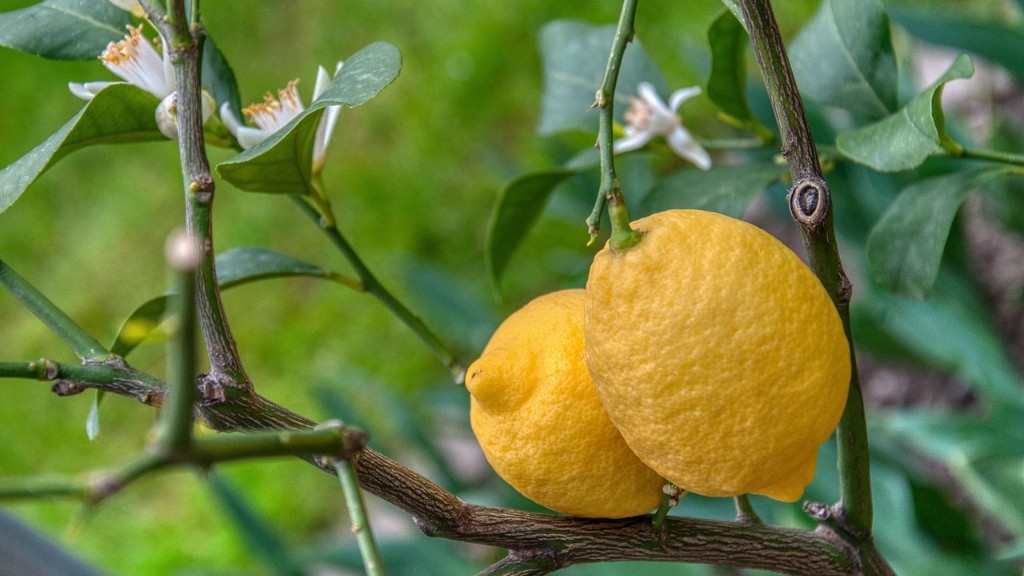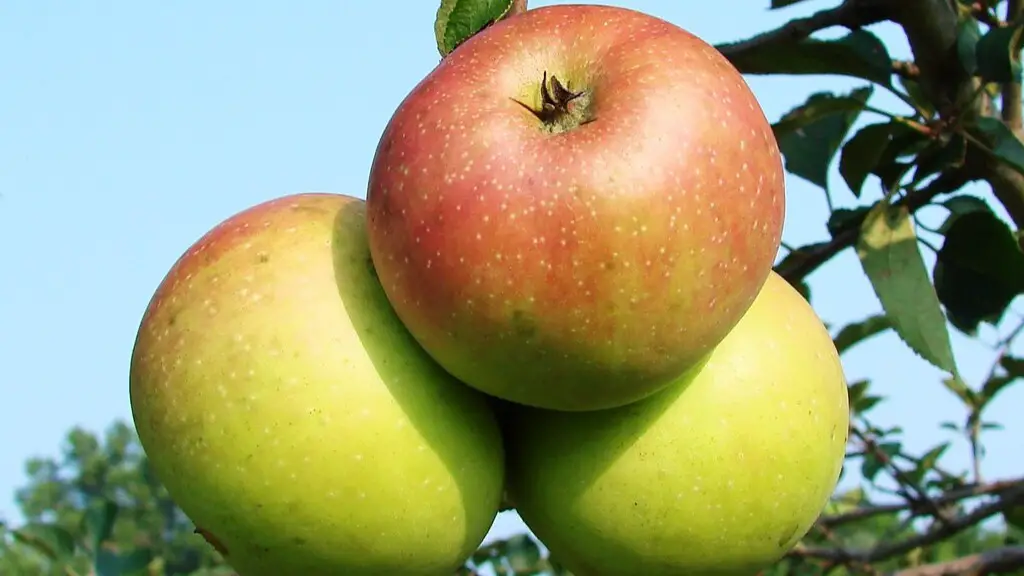Avocado trees are a beloved accompaniment to any backyard. Apart from the large and creamy fruit they bear, they’re an evergreen beauty in any landscape. But, they are quite demanding when it comes to how much water they need to survive and bear fruit. Knowing exactly how much water an avocado tree needs can be tricky sometimes, and the amount of water necessary varies depending on the environment where the tree is located.
Soil type and container size also play a significant role in understanding avocado tree water requirements as clay soil holds more water than sandy soil. Additionally, trees in planters tend to need more frequent watering as the roots don’t have the same access to natural sources of water than trees planted in the ground.
In the ideal climate, an avocado tree should receive approximately an inch of water once a week throughout the growing season. During the hot and dry seasons, however, the tree will require an increase in water – usually an extra half of an inch per week is needed; this rule should also apply to trees in planters as they will dry out quickly. It is better to water the tree deeply but less frequently as shallow watering has less of an effect on the growth of the tree.
Although avocado trees are quite forgiving in regards to how much water they need, too much water can cause a wide range of problems, from tree diseases to stunted growth. The key to providing the tree with the right amount of water is to pay close attention to the soil and ensure that the soil is not soggy or muddy. If it is, the tree will not be getting enough air, which will prevent it from growing properly.
Moreover, no matter what soil and climate the avocado tree is in, it is essential to mulch the soil around the tree and keep an eye on any weeds that may be growing. Weed growth can deprive the tree of the water and nutrients it needs, so it’s important to keep them at bay to ensure the tree grows healthy and produces plenty of nutritional avocados.
Fertilizer needs
Avocado tree growth is heavily reliant on the amount of nutrients and phosphorus that is in the soil they are planted in. As such, it’s important to make sure that your soil is adequately fertilized to promote vigorous growth and plentiful fruit production. If the soil is deficient in certain nutrients, applying a fertilizer with a lean towards phosphorus can increase the tree’s fruit production.
However, it is important to note that too much fertilizer can be just as damaging as too little. Over-fertilization can lead to the burning of roots, preventing the tree from absorbing water, and eventually resulting in stunted growth and reduced fruit production. When it comes to fertilization, it is essential to stick to a moderate schedule and use a natural fertilizer to ensure the health of your tree.
Pruning and watering routine
Keeping up a steady watering routine is essential for avocado tree maintenance, but it is not the only task that needs to be completed; pruning the tree is also an important part of caring for an avocado tree. Pruning involves trimming off dead or damaged limbs, as well as thinning out the interior of the tree so that air and light can reach all of the branches. Pruning avocado trees also helps other flowers and fruits to mature and get sufficient sunlight, while also preventing overcrowding.
Avocado trees are best pruned during their dormant season, as this is when the tree is least vulnerable to insect and disease damage. When pruning, it is also important to remember to use sharp scissors, and to make clean, accurate cuts. Uneven, sloppy pruning can damage the tree, and make it more susceptible to infection and disease, so it’s important to take your time and be patient when pruning the tree.
Winter protection
Although avocado trees do not require as much protection during the winter months as some other types of trees, it is still important to protect them from the harsh winter weather. During the winter, the tree should be wrapped in a thick layer of mulch and kept away from any strong winds or freezing temperatures. This will help to keep the roots of the tree warm and protected during the colder months.
Additionally, to help the tree maintain its nutrient balance during this season, it is important to feed it a low dose of nitrogen-rich fertilizer to help replenish the depleted soil. This step is critical in order to keep the tree healthy and happy throughout the winter and enable it to produce a bountiful crop of avocados.
Pest control ad prevention
Pests are one of the main threats to avocado tree health and can cause the leaves to become discolored and wilted, the fruit to rot, and the tree to become vulnerable to disease. To minimize the risk of any pest damage, it is essential to keep an eye out for any signs of infestation, and to regularly inspect the tree for any eggs or larvae. Catching the problem early on can help to prevent any long-term destruction.
Organic sprays and insecticidal soaps are a great way to keep the pests away without harming the tree. Additionally, keeping the area around the tree clean, and avoiding fertilizer and insecticide combinations can also help in pest control and prevention.
Use of fertilizer products
Fertilizer products can be a great way to ensure your avocado tree is growing healthy and producing plenty of delicious fruits. Synthetic fertilizers- with the right balance of nitrogen, phosphorus, and potassium- can provide the tree with an optimal nutrient balance which can result in better flowering and fruit production.
However, it is important to note that it is essential to choose a fertilizer that is specifically designed for avocado trees, and that the soil is tested to determine if the nutrient levels are adequate. Applying too much or too little fertilizer to the soil can have a negative effect on the tree’s health, and can make it more vulnerable to pest and disease infestation.
Repotting
Repotting an avocado tree is an important step in its growth and should be done every two or three years -depending on how quickly the roots of the tree are growing. This process involves carefully digging around the root ball, removing it from the soil, and transplanting it into a larger pot. This is because as the tree grows bigger, it will need more space for its roots to spread out.
When repotting, it is essential to use fresh potting soil and to make sure the soil is lightly packed. Using soil with too much clay or loose drainage can be detrimental to the tree’s health, as the tree will be deprived of the necessary air and water it needs. Additionally, make sure the pot you’re transplanting the tree into is big enough for the tree’s growing root system, and is made out of a material that will not crack or break easily.


